The History Of Troy
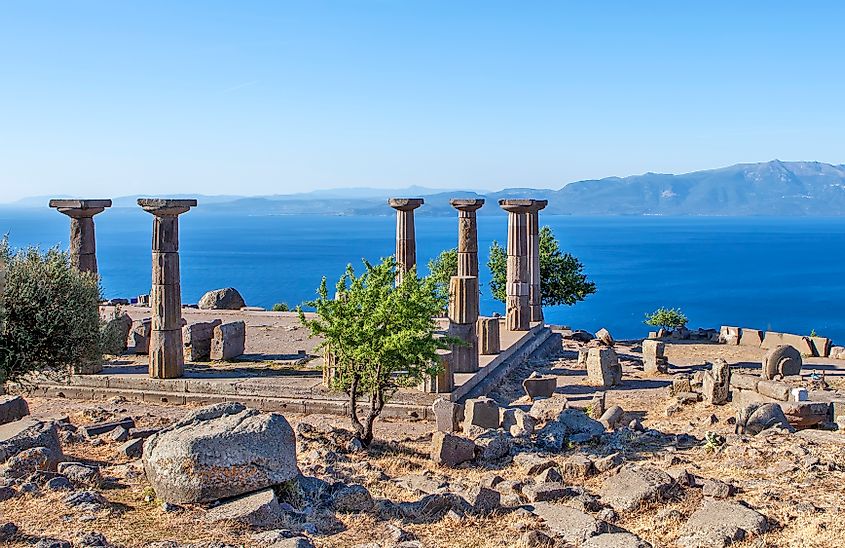
Troy was an ancient Bronze Age city located in modern-day Turkey. It was also the legendary setting for Homer’s epic poems, the Iliad and the Odyssey, mentioned in the introduction. The city of Troy was strategically positioned between the Mediterranean Sea and the civilizations to the East. Perched on the banks of the Scamanda River and protected by the Bay of Besik. Troy controlled the point of access into the Black Sea which contributed to its rise in importance and the incredible influence it wielded in the Bronze Age. However, understanding the history of Troy is difficult because the reality is that this ancient city of eras gone by was captured and destroyed not once but nine times. Its prime location made it a target but it was also a strategic city for anyone interested in growing an empire, from the Greeks to the Romans everyone wanted Troy. And as such, it was conquered and rebuilt many times throughout history.
Schliemann’s Treasure
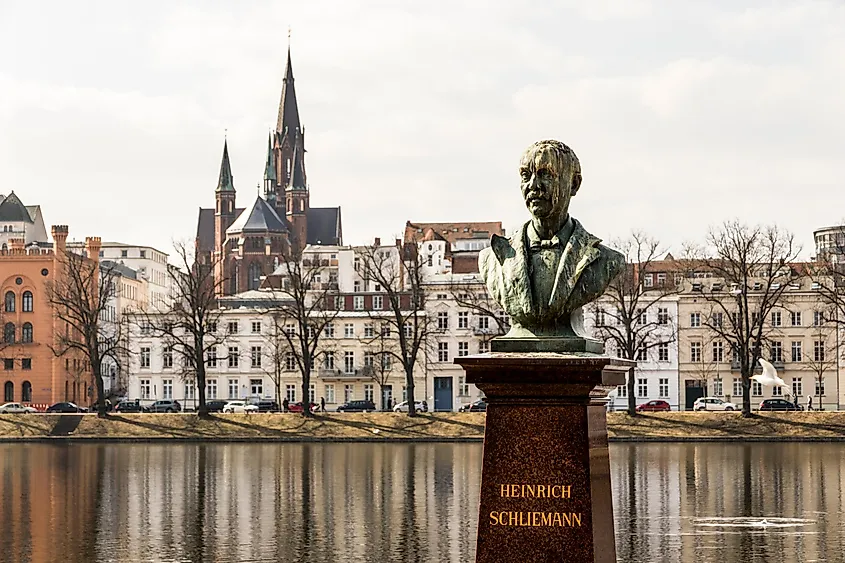
Before we take a deep dive into the different phases of Troy’s history we must understand who Schliemann is and the famous treasure that he unearthed. Schliemann was not an impressive archeologist and in his zeal, he did a lot of irreversible damage. However, to his credit, he did discover the site of what is commonly believed to be the legendary city, of Troy. He even excavated gold artifacts that later became known as Schliemann Treasure. But he was careless and he unintentionally dug through several layers of Troy’s history without documentation making it near impossible to identify what those periods were like.
Troy 0 (Pre-3000 BCE)
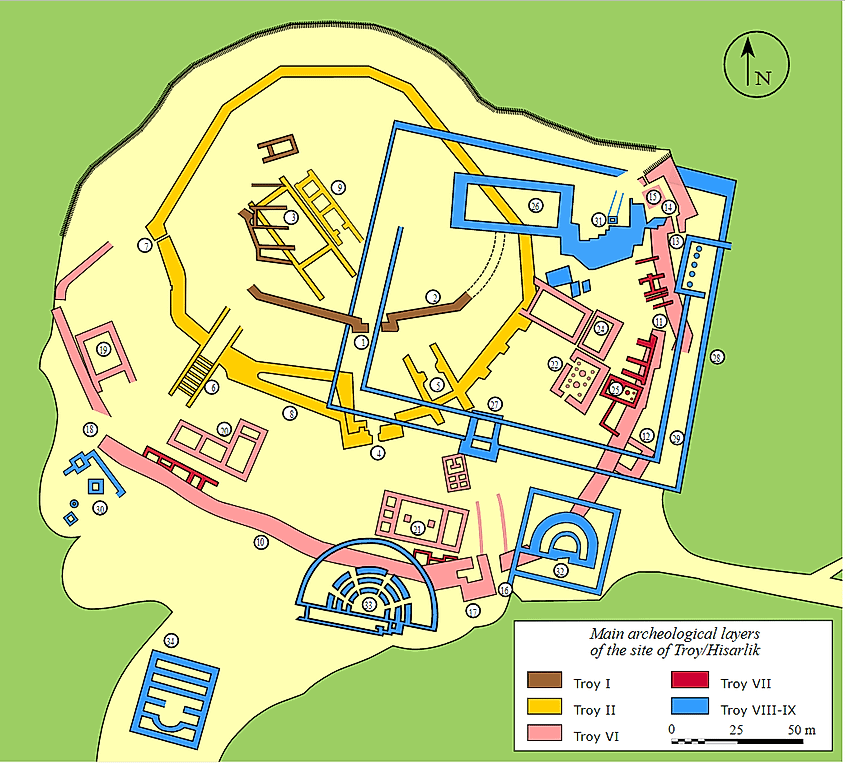
It was long believed that Troy 1 was the earliest settlement of Troy. However, Troy 0 lay hidden in the shadow just out of reach, until 2019, when advances in technology allowed archeologists to peer even further into history and identify the remains of a townlet predating Troy 1. However, not much is known about this place or the people who lived there beyond the fact that humans lived in the area before 3000 BCE.
Troy 1 (3000-2550 BCE)
Troy I was a small village probably founded near the third millennia BC. The village was made predominantly of stone and mudbrick houses linked together and protected by a stone wall. The cultural artifacts unearthed from Troy 1 are similar to other Bronze Age Greek settlements.
Troy II (2550-2300 BCE)
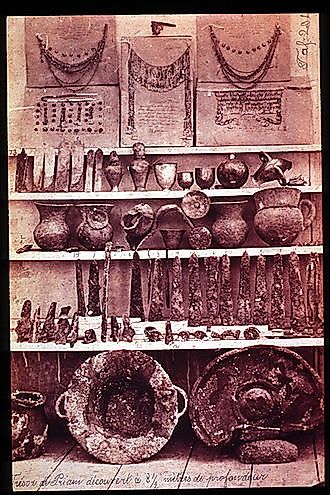
Troy II, based on archeological finds, appears to be a much more influential city than Troy 0. Buildings from this timestamp are bigger and the walls and gate are much more impressive. It is during this period that German archeologist Schliemann discovered his treasure. Schliemann found 60 earrings, six bracelets, two jewelled crowns and 8750 rings, all of these treasures were made of gold. It would also seem that Troy II was significantly involved in trade based on the number of materials that could have only come from Asia that were found in the ruins.
Troy III-V (2300-1750 BCE)
It was this period of Troy’s history that Schliemann singlehandedly destroyed a significant part of Troy’s history. As a result, not much is known about the people that called this version of Troy home. What little ruins archeologists have been able to salvage seem to suggest that the settlements included a dense residential neighbourhood within the fortified castle implying significant amounts of population growth during this time.
Troy VI-VII ( 1750-950 BCE)
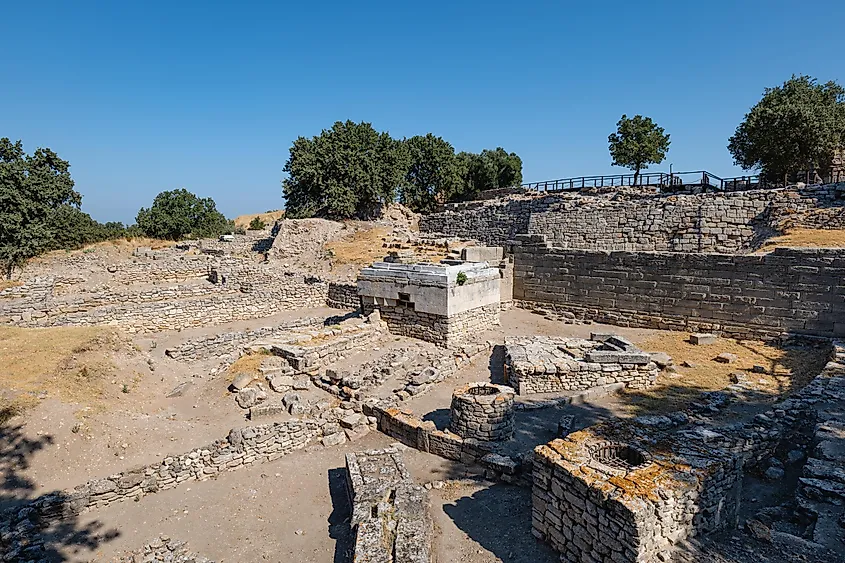
Troy VI-VII was a massive Late Bronze Age city and is a serious contester for the setting of Homer’s Troy. This ancient city had an impressive castle with a sprawling town that spilled out around its towering walls. This vibrant coastal city was filled with the hustle and bustle of a large population. Many scholars hypothesize that given Troy’s position near the Dardanelles Strait Troy could have functioned as the regional capital. Some of the architecture unearthed during this period of Troy’s history is consistent with descriptions of Homer’s poems giving even more credit to the idea that this Troy city was the one Homer wrote about.
Troy VIII-Troy IX (950 BCE-500 CE)
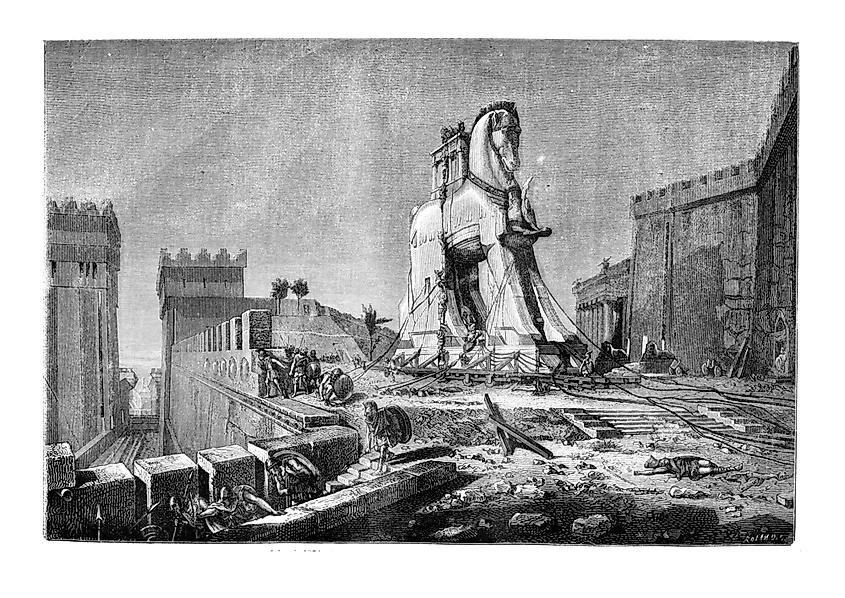
Because of Troy’s strategic position and rich history, the city continued to be a coveted site. The Trojans were first conquered by the Greeks and then later by the Romans, while there were several attempts to restore Troy to its former glory it never was able to recapture its splendour. Finally, after being destroyed twice by earthquakes this great city was abandoned and gradually blanketed with rubble and dirt. Until atlas, as the long centuries rolled by, the great city of Troy passed from memory. Where it lay, cloaked in mystery until it was eventually rediscovered nearly 1000 years later by German archeologist Heinrich Schliemann.
Troy Today
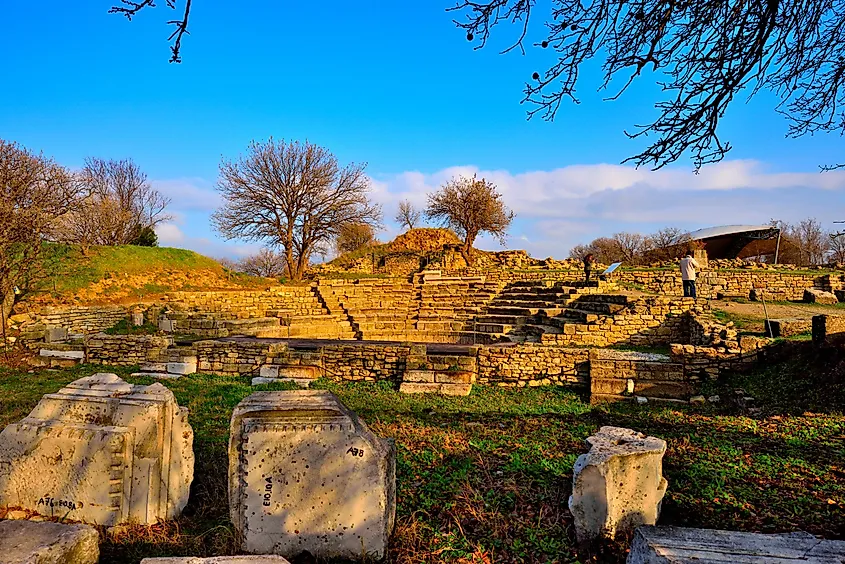
Today, Troy is a popular attraction with thousands of tourists arriving every year to see the ruins of the once-great city. You can visit the ruins by travelling from Istanbul a 291 mile trip one way. The site is a UNESCO World Heritage site and there are many options when it comes to seeing the great city of antiquity. One of the more popular options is a chartered minibus that takes you directly from Istanbul in the comfort of an air-conditioned vehicle and provides you with a guided tour through the ruins of Troy. Archaeologists continue to excavate more of the city to this day. The digs are being led by Turkish archaeologists. This is a significant change, as past excavations were European and American-led.
Despite being founded over 5000 years ago Troy continues to captivate the minds of people all around the globe. The city might be left in ruins but it has inspired countless books and movies and continues to impact our world today. Have you heard of your Achilles heel? That is directly tied to Homer’s story of Troy! If you haven’t already, check out Homer’s Iliad.


 Users Today : 729
Users Today : 729 Total views : 464501
Total views : 464501